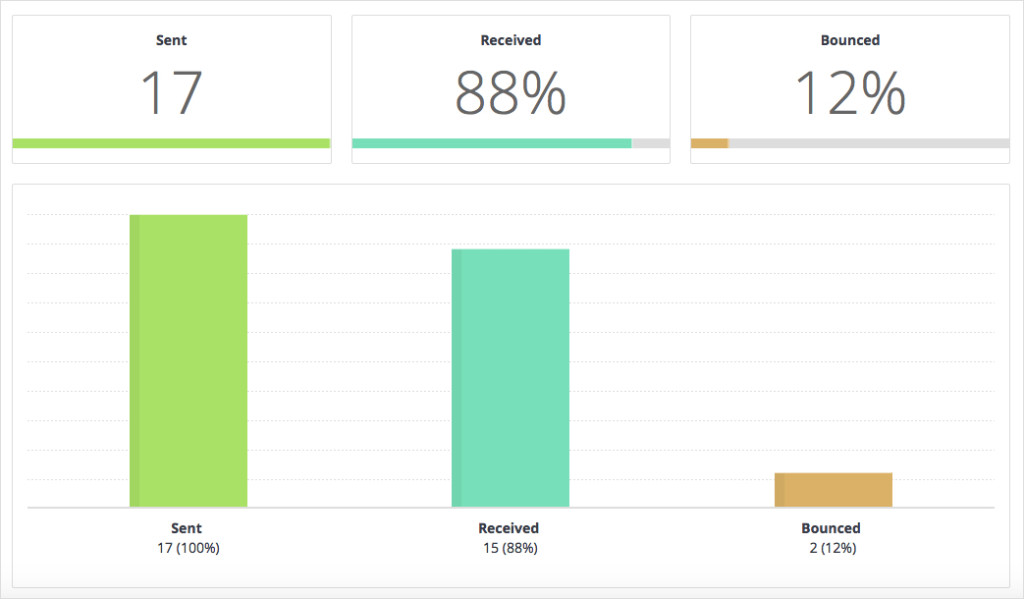
I’ve sent out a text message campaign, now what?
By Sophia Skinbjerg | sophia.skinbjerg@ungapped.com
Firstly, congrats on sending out your text message campaign! If you’re new to SMS marketing you’ve taken the hardest step: just getting started. Now comes the important measurement stage.
But how and what do you measure after you have sent a text message? When it comes to SMS marketing there are a handful of things you can do from a measurement perspective. And granted, they aren’t as extensive as email marketing but they certainly can give you valuable insight into your customers. The great thing is that measurement procedures are all fairly easy to manage. Here are a few metrics to follow when running your text message campaign:
Bounce rate
The very first thing you need to do once you’ve sent your text message is to check in and determine how many of your contacts received your text message. If you don’t determine this, you’re statistics are going to be using the total number of contacts you sent to which will likely dilute your percentages as you calculate other statistics.

Firstly, look at your bounce rate and omit this number from your other calculations. Source: Ungapped
Subscriber Growth
Subscriber growth means taking a look at the number of people you had on your list prior to starting your text message campaign versus the number of people on your list once your campaign has ended. Pretty simple.
The time period for which you’ll be measuring subscriber growth will be based entirely on the amount of time you run your campaign for. But a good rule of thumb is to measure for a duration of one week prior to your campaign start date until one week following the end of your campaign whilst continuously measuring on a weekly basis as well.
Measuring the number of subscribers before the campaign was launched will give you a good “before and after” snapshot to show you the total number of new subscribers you have gained since running the campaign. Including the week following the last day of your text message campaign may only be applicable to those of you that have a longer offer or redeem period. For example, you sent your last text message on January 25th but people could redeem your offer until January 31st. If you just measure until the 25th, you’re going to leave out the last minute redeemers in your reporting.
By measuring the growth on a weekly basis, you’ll also be able to better deduce why certain text messages gave more growth than others, giving yourself the chance to repeat them before campaign’s end.
Subscriber Churn Rate
Subscriber churn rate measures the frequency at which people are opting out of your text message campaign over time. Most companies will be measuring total churn rate (that is, all customers even those not communicated to via text messages) on a monthly, quarterly or yearly basis. Ideally, you do not want your churn rate to be over 2-3% regardless of how often you measure.
One important thing to note is that churn rates should be measured both throughout individual campaigns but also in comparison to past text message campaigns. Doing so will give you insights into not only the number of customers lost in individual campaigns but also the impact this has on greater business goals over the long-term.
How to calculate churn rate:
If you’ve not calculated churn rate before, use this equation to determine percentages for each text message campaign.
Churn rate = # of lost subscribers during a given period / # of subscribers you had at the beginning of that time period
Redemption Rate
This is what you’ll monitor on a campaign-by-campaign basis to determine the total number or percentage of customers that redeem your offers shared with text messages.
This statistic is usually the very first statistic that people measure once they have sent out a text message campaign. And for good reason – it’s a pretty good indicator for success. But keep in mind that the success of a campaign doesn’t simply come from knowing this statistic. Its real worth comes when used in combination with the rest of the KPIs we’ve covered in this post.
Cost Per Redeeming Subscriber
From the redemption rate, you can determine the cost of communicating with each customer that receives your text messages. Simply use the below equation:
Cost per redeeming subscriber = total cost of text messages sent / # of redeeming subscribers
For example:
I send 50 text messages to customers offering a buy one month get one free offer and 20 redeem the offer. It costs me 20 cents to send one text message. To work out how much it costs me to gain a redeeming subscriber I would use:
Cost per redeeming subscriber = 200 / 20 redeeming subscribers
Therefore, it costs me 10 dollars for every redeeming subscriber. Knowing this value helps me better plan for future campaigns and whether more budget can be added in order to obtain more redeemed offers.